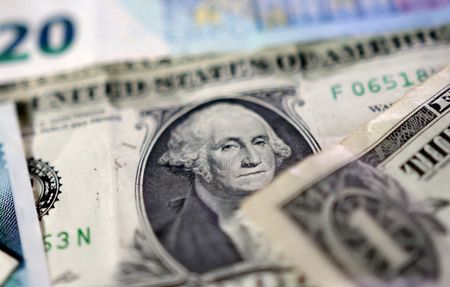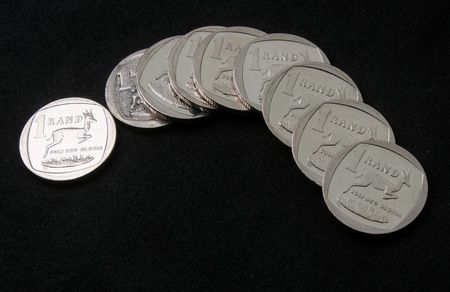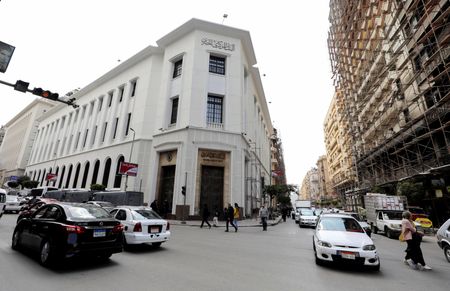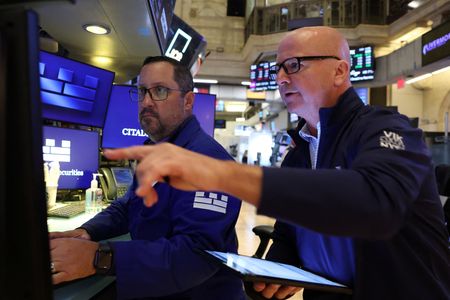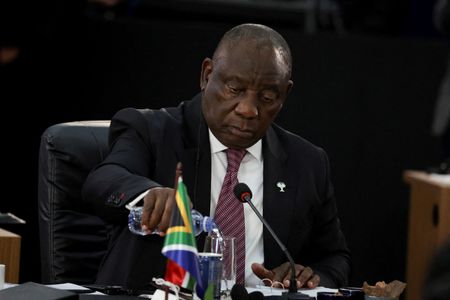By Ankur Banerjee and Jaspreet Kalra
SINGAPORE (Reuters) -The dollar was steady on Friday but poised for a 2% drop in August against major currencies on rising bets that the Federal Reserve will cut interest rates next month, while worries about the threats to the U.S. central bank’s independence linger.
The euro was flat at $1.1677 while sterling slipped 0.2% to $1.3474. Both currencies are on course to end up over 2% against the dollar this month.
Against the Japanese yen, the dollar was steady at 146.975 yen.
President Donald Trump’s campaign to exert more influence over monetary policy, including this week’s attempt to fire Lisa Cook, one of the Fed’s governors, has weighed on the dollar.
Cook filed a lawsuit claiming Trump has no power to remove her from office and also filed a motion for a temporary restraining order, the hearing for which is scheduled on Friday.
The legal battle is the latest chapter in Trump’s attempts to reshape the central bank after repeatedly criticising the Fed and its Chair Jerome Powell for not cutting interest rates.
Still, market reaction to the battle between Trump and Cook has been relatively muted, with slight dollar selling and curve steepening with investors keeping their near-term focus on the prospects of rate cuts by the U.S. central bank.
Money markets are currently pricing in an 86% chance of a rate cut in September, up from 63% a month earlier, CME FedWatch showed.
“While markets remain reluctant to speculate on this Fed story and continue to focus on data-driven short-term developments, the downside risks for the dollar have undoubtedly grown,” Francesco Pesole, an FX strategist at ING, said in a note.
Fed Governor Christopher Waller said on Thursday he wants to start cutting rates next month and “fully expects” more rate cuts to follow to bring the central bank’s policy rate closer to a neutral setting.
Investors will parse through the PCE price index report, the Fed’s preferred inflation measure, later on Friday. On a year-over-year basis, headline PCE inflation is estimated at 2.6%, after rising at the same rate in June.
While a reading of 3% or higher will raise eyebrows after the Fed’s dovish pivot, the key data remains next Friday’s labour market report ahead of the September FOMC meeting, said Tony Sycamore, market analyst at IG.
Elsewhere, euro zone consumers kept their inflation expectations mostly stable at or above the European Central Bank’s 2% target in July, according to an ECB poll released on Friday.
Data released on Friday also showed that French consumer prices rose slightly less than anticipated in August while Spain’s European Union-harmonised 12-month inflation rate was steady at 2.7%.
“We don’t think there will be much in the data to convince markets to materially reprice ECB rate expectations just yet,” Pesole said.
Among other currencies, the New Zealand dollar, was slightly stronger after Reserve Bank of New Zealand Chairman Neil Quigley tendered his resignation, citing the fallout over the handling of the sudden resignation of the central bank’s governor earlier this year.
China’s yuan hit its strongest level in 10 months against the dollar as steady central bank fixings and a hot domestic stock market drive the currency higher, while the Indian rupee dropped to a record low, weighed down by worries about the economic impact of steep U.S. tariffs on Indian imports.

